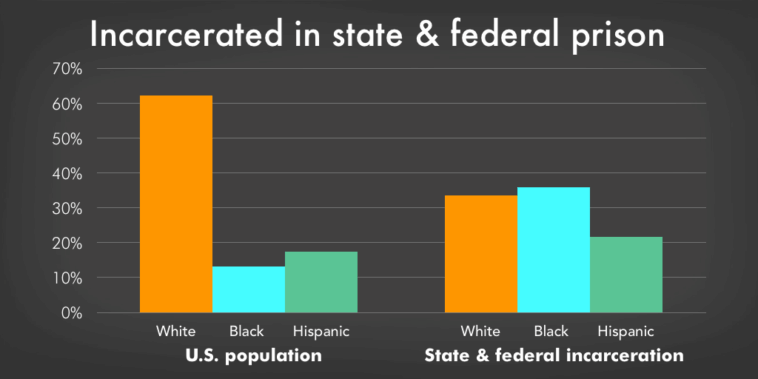In the wake of the prevalent left-leaning initiatives calling to ‘defund the police’, fresh FBI data reveals a startling reality. A total of 58% of murders and nonnegligent manslaughters in 2023 across the United States were solved by law enforcement, showcasing a worrisome drop in the country’s crime clearance rate. In essence, the clearance rate is a parameter that calculates the sum of arrests or unusual clearances related to a specific crime within a particular year and divides it by the total instances of the same criminal activity reported to the police throughout the year.
A crime is then officially regarded as ‘cleared’ in instances where an arrest has been made with regards to the suspect involved or if the investigation has been conclusively ended via uncommon methods. In such a scenario, ‘uncommon methods’ or ‘exceptional clearances’ hint towards a situation when the law enforcement authorities have not only identified the potential offender but also established his location and gathered enough evidence for an arrest but couldn’t physically detain him due to reasons beyond their control, such as the death of the supposed offender.
In striking contrast, other nations have higher murder clearance rates. Data suggests that countries like Australia, Britain, and Germany have reported significantly better murder clearance rates, which covers the 70-90% range. Despite a large number of murders in the United States going unsolved for at least a year’s span, murder investigations still hold a comparatively higher clearance ratio than other significant crimes.
When we delve into other major crimes, vehicle theft is found to have an extremely disheartening clearance rate of just 8% in 2023. Moreover, other terrifying crimes such as rape, robbery, and assault registered staggeringly low clearance rates of 27%, 28%, and 46% respectively. Such low rates of crime resolution raise questions on the effectiveness of the justice system in the current scenario.
It’s also important to note that these low clearance rates emerged a few years after an unpleasant rise in the number of black American murders took place. To provide a clear perspective, the period from 2010 to 2019 recorded an average of 5,954 white murders, roughly 16% less than the average black murders over the same decade.
Moreover, the average number of black American murders recorded each year during the same decade was 6,927. Juxtaposing this data with the figures from 2020 shows a horrifying trend – black murders in 2020 had surged by a shocking 43% in comparison to the previous decade’s average. The alarming rise in crime rates witnessed in 2020 can be attributed, in part, to the Black Lives Matter and ‘defund the police’ movements.
The ‘defund the police’ movement witnessed significant uptake in the aftermath of George Floyd’s death, being championed by several Democratic politicians. This initiative envisioned a drastic overhaul of the existing police system, reimagining it into an institution that fosters safety without violating civil rights, and reallocating funds towards community services.
However, the ‘defund the police’ proposition and the belief that it inhibited effective law enforcement has received criticism, particularly in the light of the turbulent crime rates in 2020 and beyond. In spite of crime rates being a multifaceted issue influenced by several social and economic factors, the role of effective policing shouldn’t be downplayed.
Furthermore, the significant disparity in clearance rates between different crimes warrants a deeper examination. The fact that the clearance rates for crimes such as rape, robbery, and assault are woefully low compared to that of murder raises questions about the priorities in law enforcement and the allocation of resources.
Simultaneously, the racial disparity in murder rates also presents a serious cause for concern. The staggering increase in black murders is indicative of deep-rooted societal issues that seem to be setting an unfortunate precedence for violent crime trends. There needs to be an urgent evaluation of the factors contributing to this disturbing surge.
While the reform-oriented ‘defund the police’ movement unfolds, it’s crucial to understand that it is a plea for a balanced reinvention of the police institution. Its goal lies not in abolishing law enforcement, but redesigning it into an agency that respects human rights, impedance of racial bias, and advocating for substantial investment in community services.
Despite this objective, there seems to be a fundamental disconnect in correlating the objectives of ‘defunding the police’ with the escalating crime rates witnessed in recent times. It’s a widely debated topic whether the movement had a direct role in enabling a volatile environment, or whether deeper socio-economic factors were at play.
Analyzing these crime clearance rates, it becomes apparent that there are impending structural changes needed in law enforcement. Not only in the methods adopted to administrate justice but also in the strategies used to investigate and solve diverse kinds of crime involved.
Moreover, the relative decline in police efficiency, as evidenced by the reduced crime clearance rates, could be indiscriminately linked to several factors. These factors range from the reprioritization of police resources, pushback from controversial police reforms, to broader social disruptions.
In conclusion, these statistics are an urgent reminder that while the call for police reforms is absolutely imperative, the necessity for effective law enforcement cannot be diminished. Law enforcement agencies need to identify and rectify the systemic issues that may be contributing to these disappointing crime clearance rates and work towards creating an environment that upholds justice and public safety.

